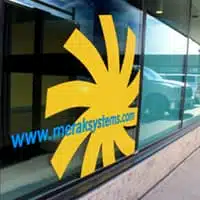A full team of Quality Assurance Analysts (QAs) represented MERAK at the 2012 KWSQA Annual Targeting Quality Conference. They felt that the conference was a great way to know what was happening in the industry and with their fellow QA colleagues. Here are the top-five things they took away from this conference.
-
Session Based Test Management – In an Agile Sprint where the clock is ticking, testers often face the challenge of balancing requirements coverage and exploratory testing. Session Based Testing can be an effective approach to ensuring requirements are implemented and validated while gaining the most coverage out of your test areas. This method has the flexibility to be integrated into existing test strategies or used as an additional tool during testing.
-
Ice Cream Cone Effect – Is introduced as “anti-pattern” testing that leads to bad results. It applies to waterfall, agile or any testing methodology. This is not a good approach since you will be creating “inverted” pyramids of software testing that will result in “ice cream cone” testing. If the order of testing follows unit tests, integration tests, automated GUI test and manual tests, it results in software testing anti-pattern. Ideal software testing pyramid should follow automated unit tests, automated component tests, automated integration tests, automated API tests, automated GUI tests and manual session based tests.
-
Automation Testing – It is impossible to automate all regression test suites. It can be easier to create a new automation test rather than maintain the old one. Any repetitive tests should be automated.
-
Crazy Testing – Is important as it brings in a variety of factors: creativity, open mindedness, innovation and simplicity. In order to catch the functionality it is important to ask the following questions As a…, I want…, and so that… Using mind map strategies can help organize, ensure the right coverage and prioritize. When the QA asks 4 – 5 why’s before they start testing, it aids in understanding the business needs more significantly. Think outside the box and test crazy ideas, like Soap Opera testing.
-
Waterfall vs. Agile – When looking at the difference between the two most frequently used methodologies in IT today Waterfall and Agile, it is important to note that Waterfall is a very process oriented approach and Agile focuses on utilizing people’s skills and intelligence. A good example of a difference is how metrics are used – Waterfall relies on the collection of many metrics that can be misleading, deceptive or unhelpful, Agile uses simple metrics that give a clear indication of testing.
Last Updated: June 25, 2025



